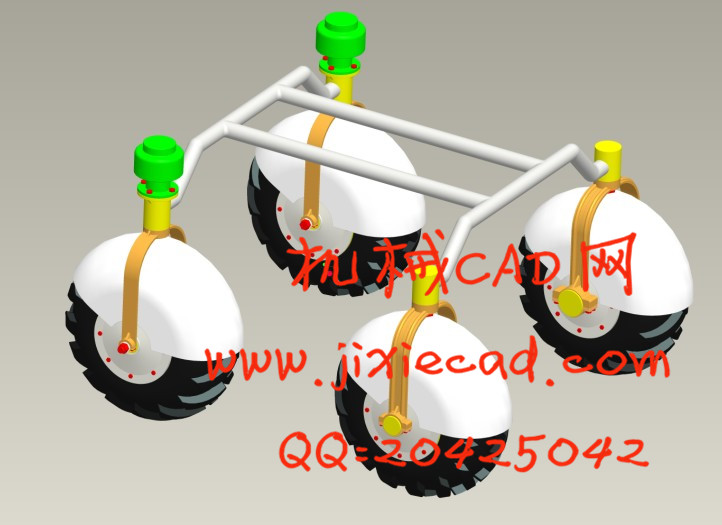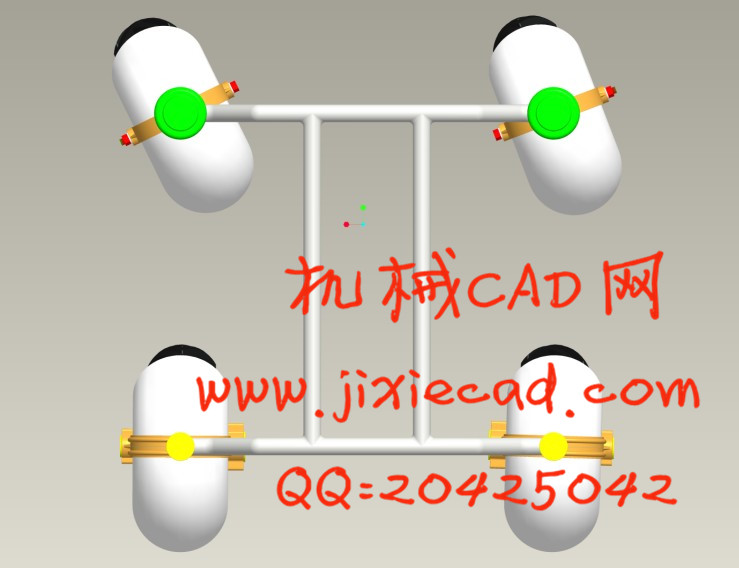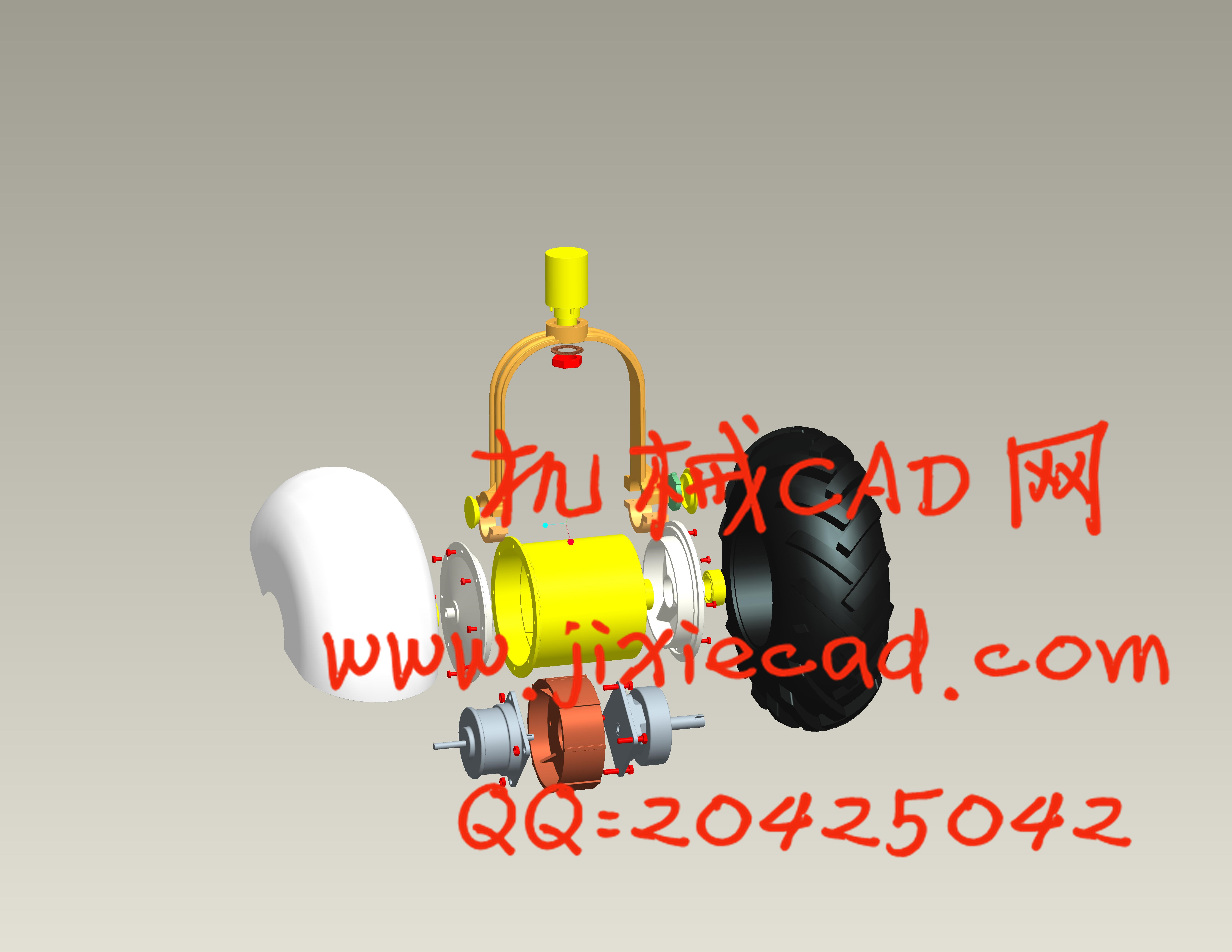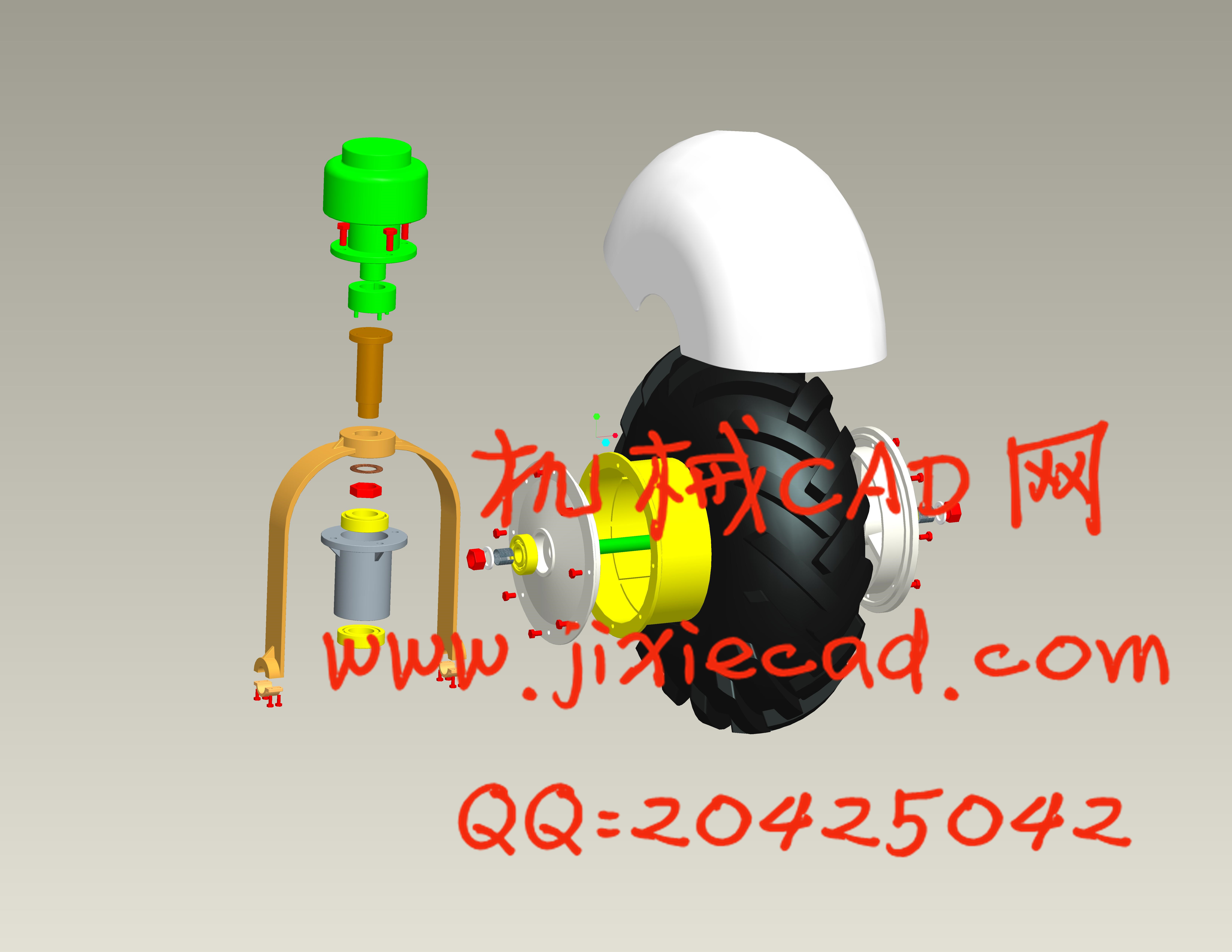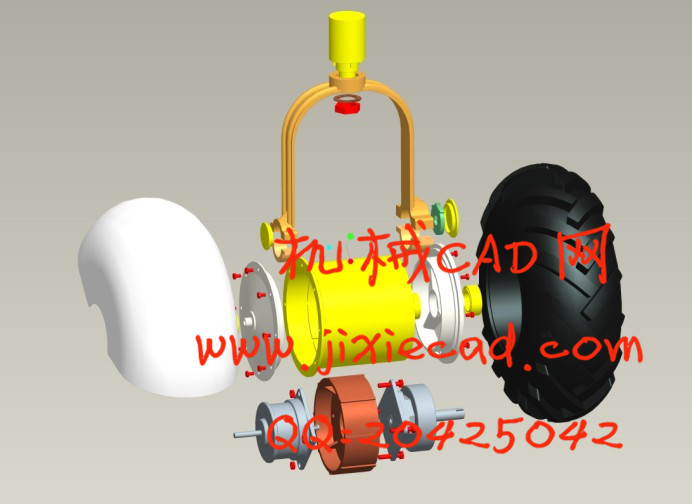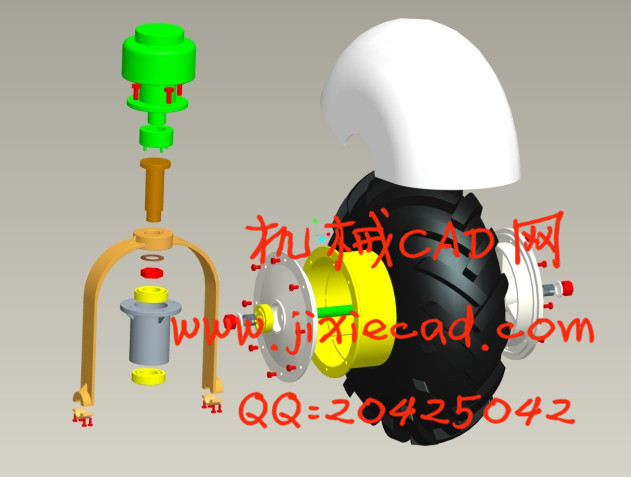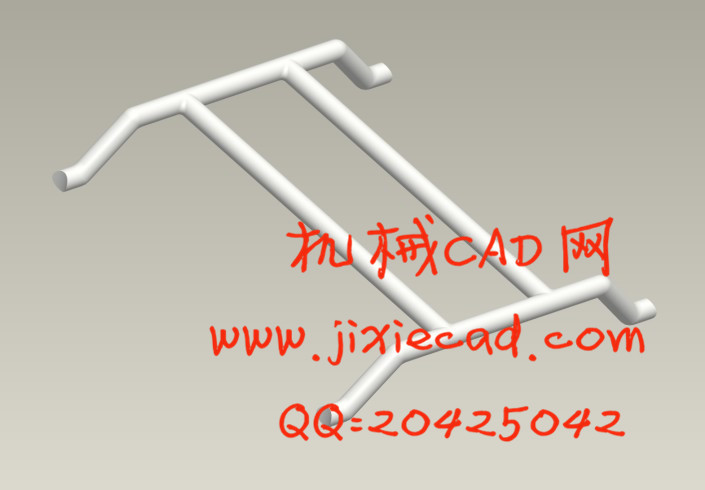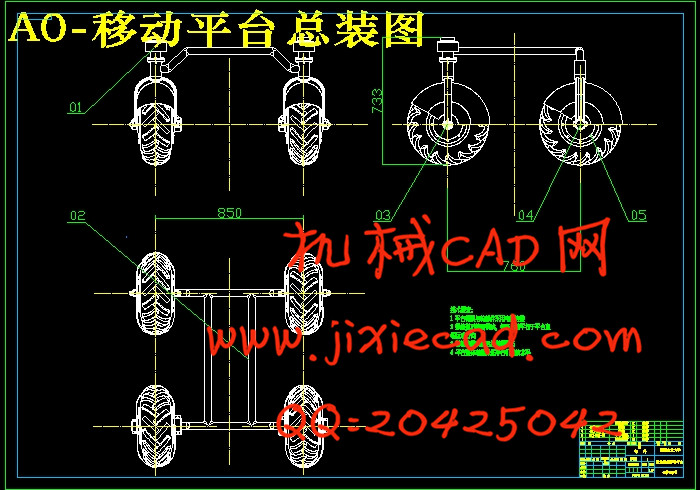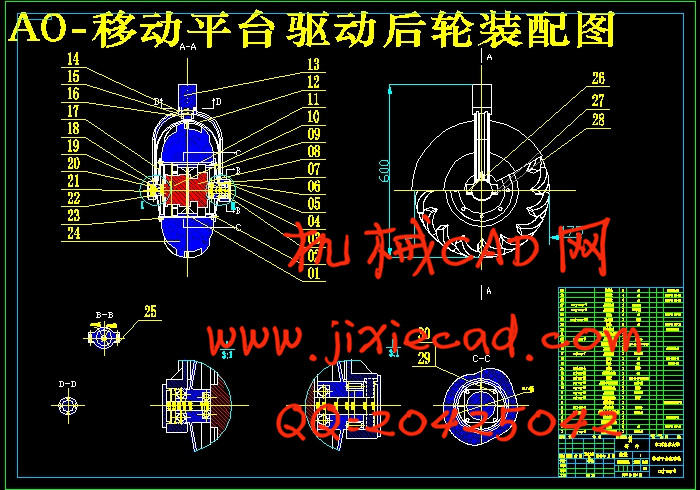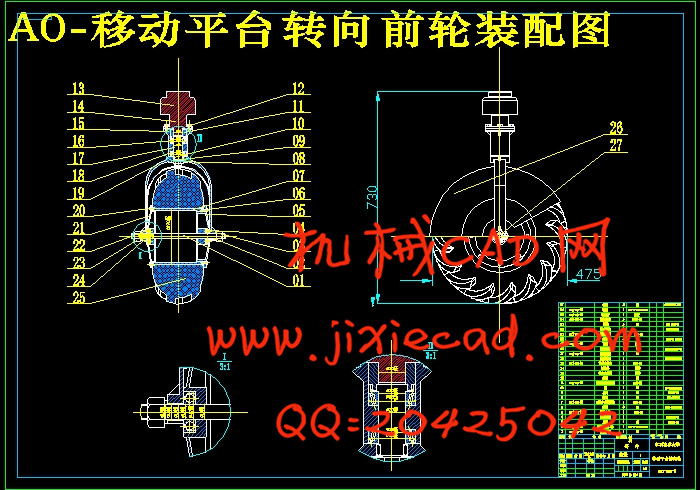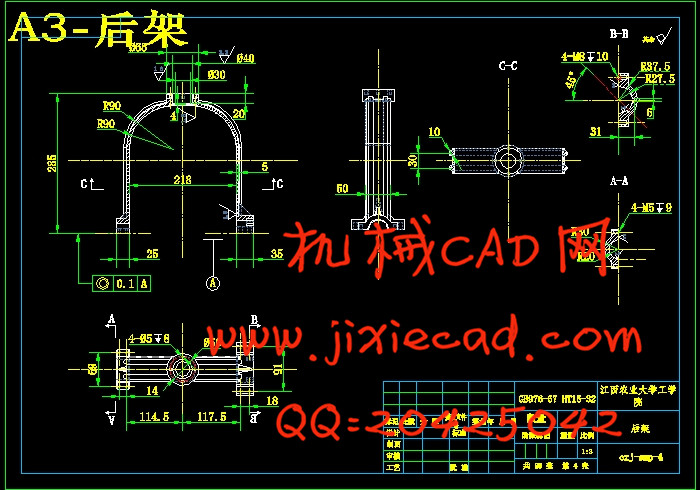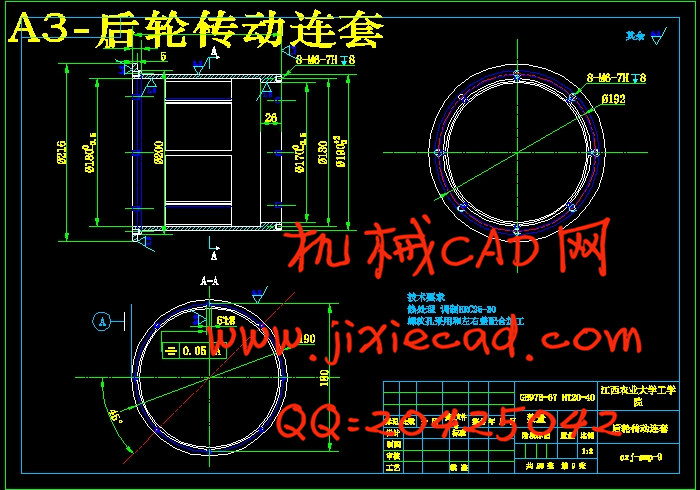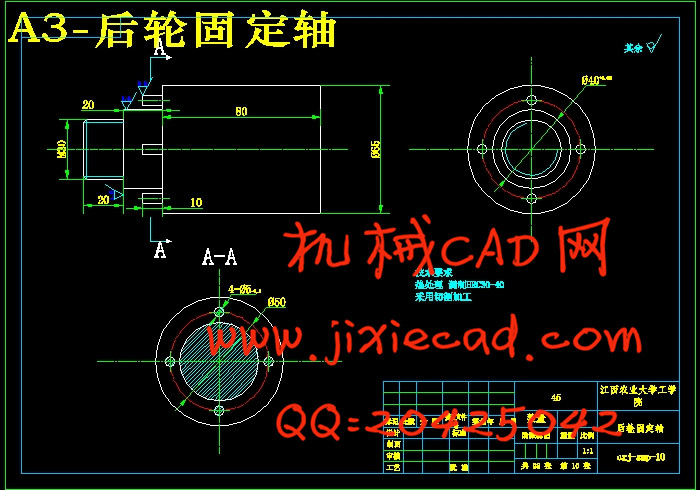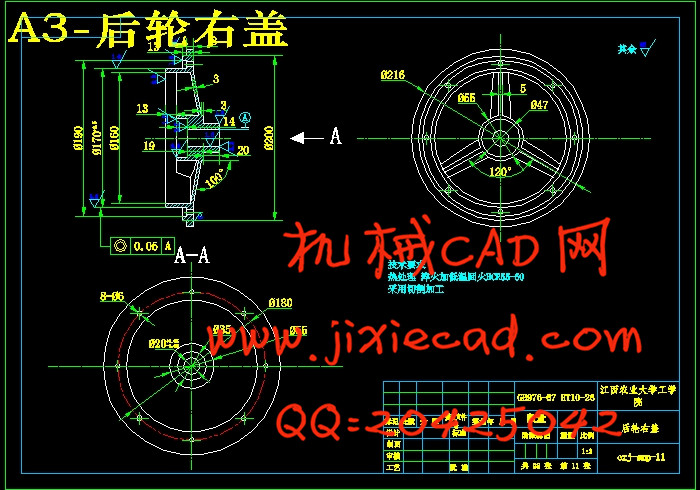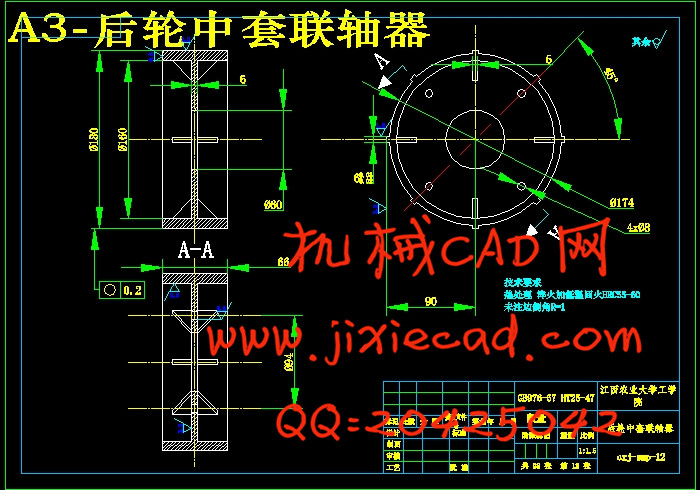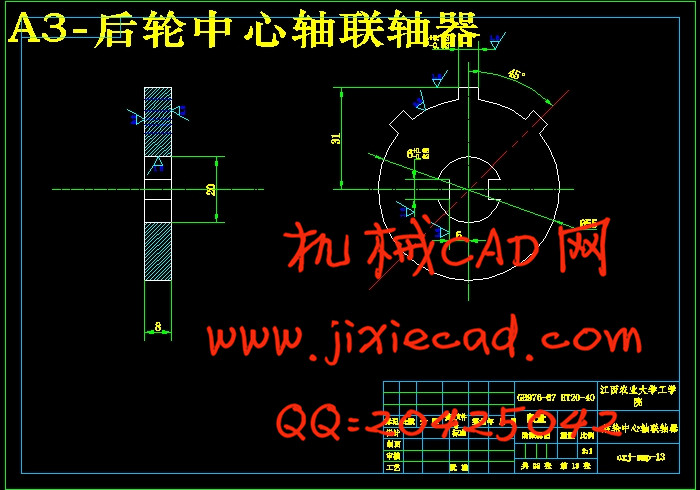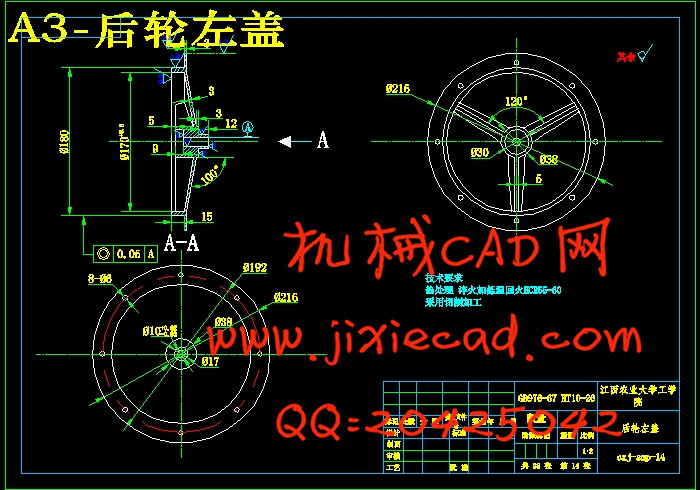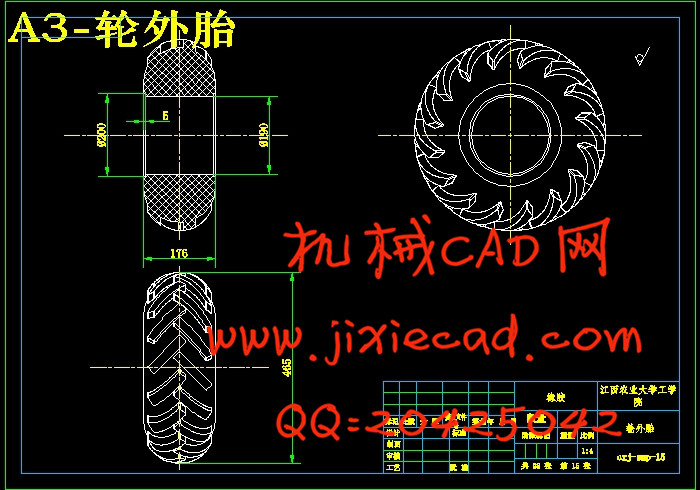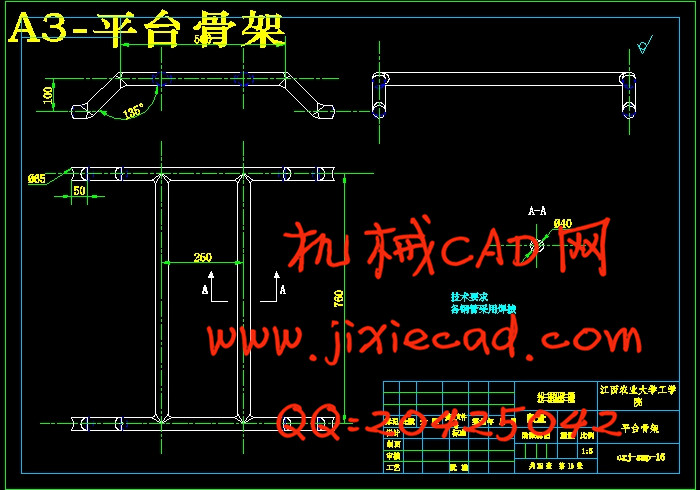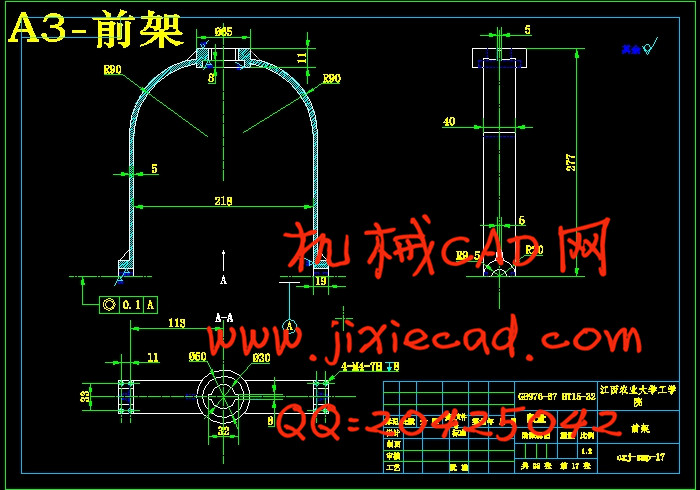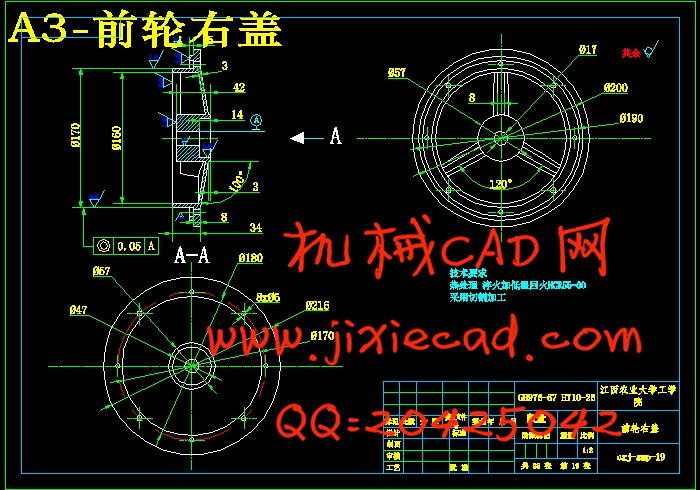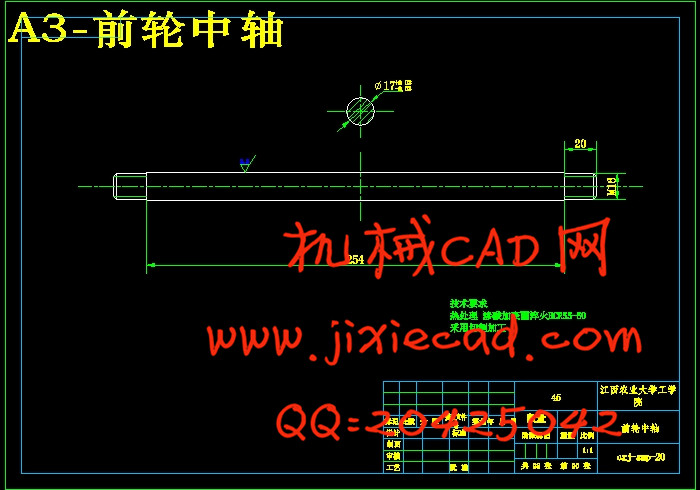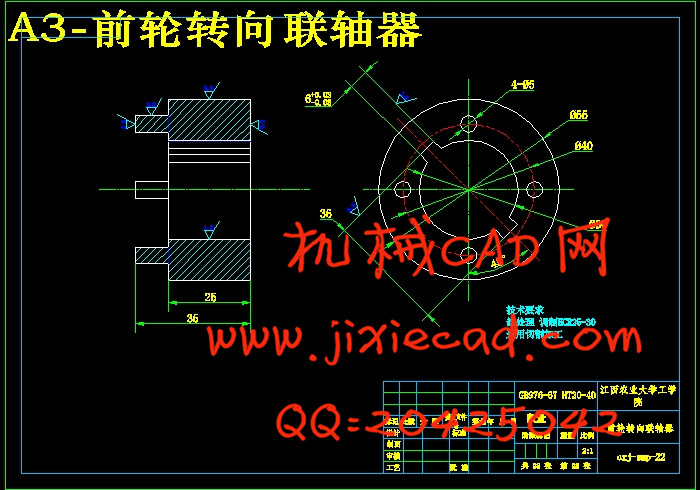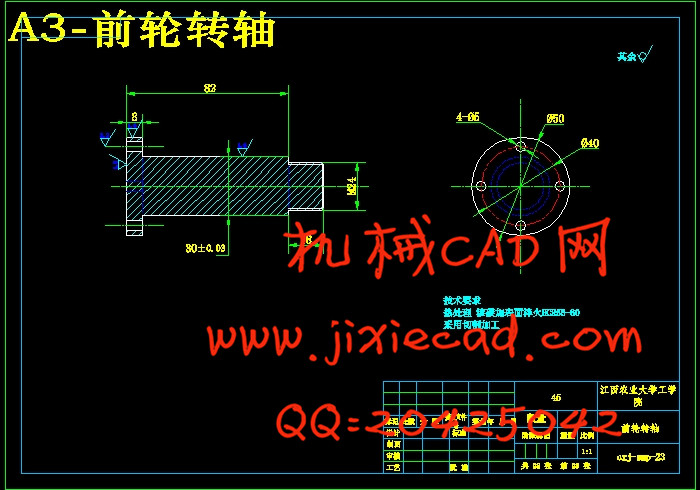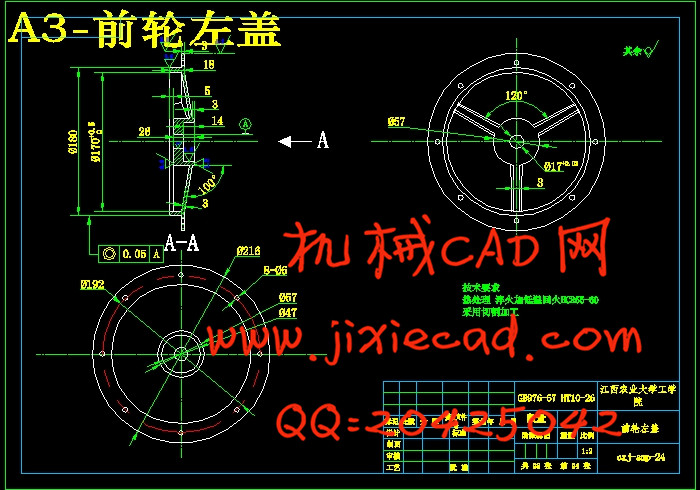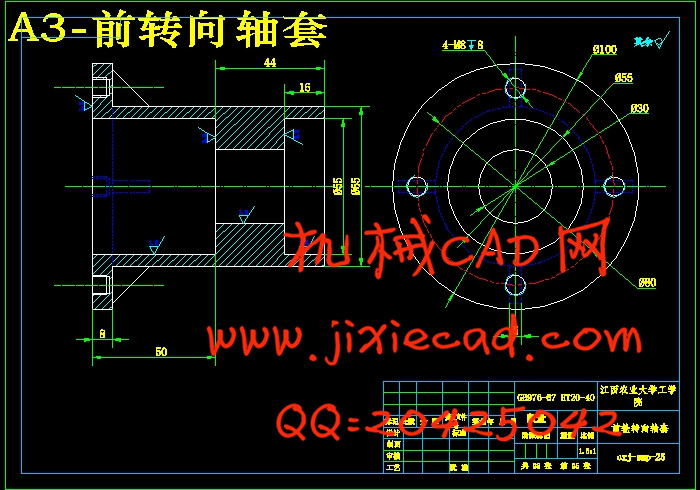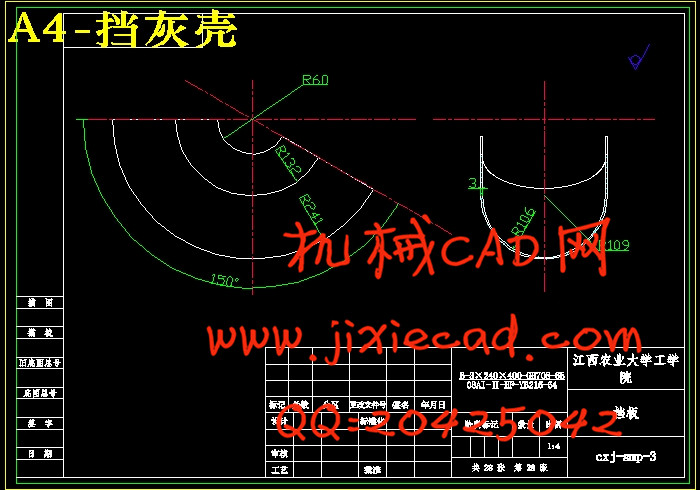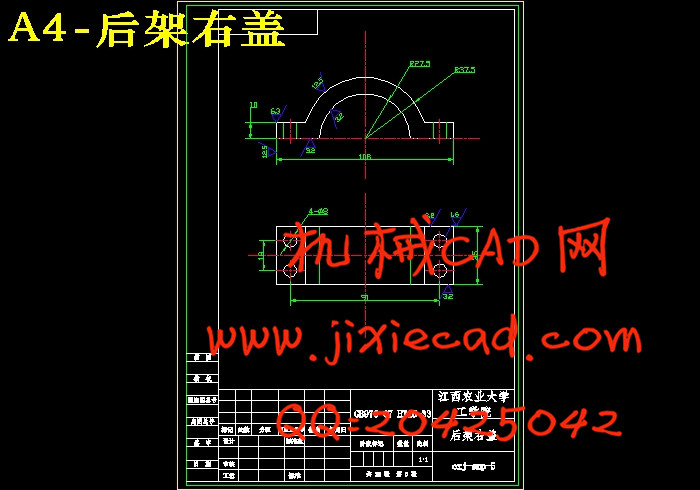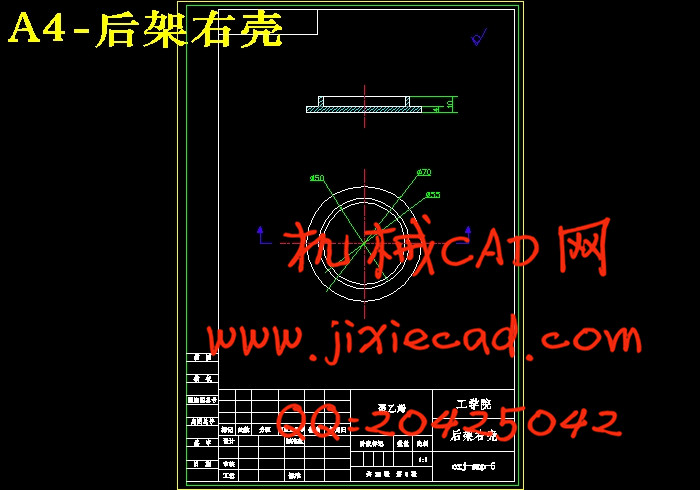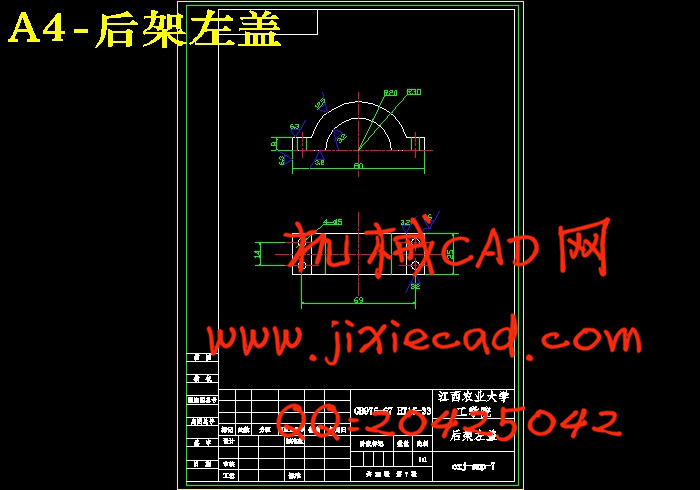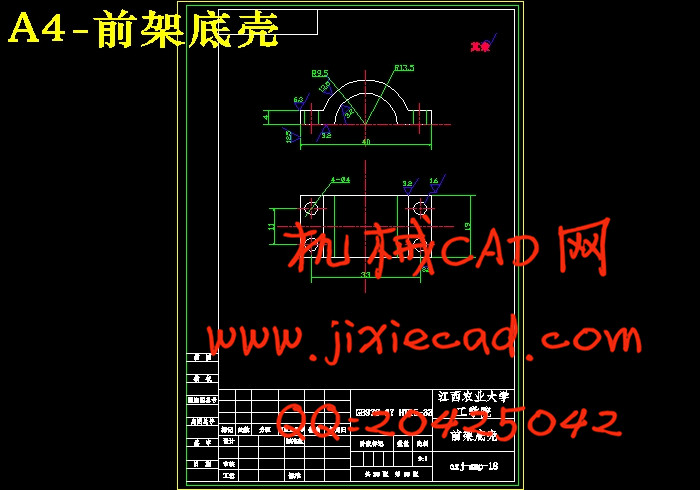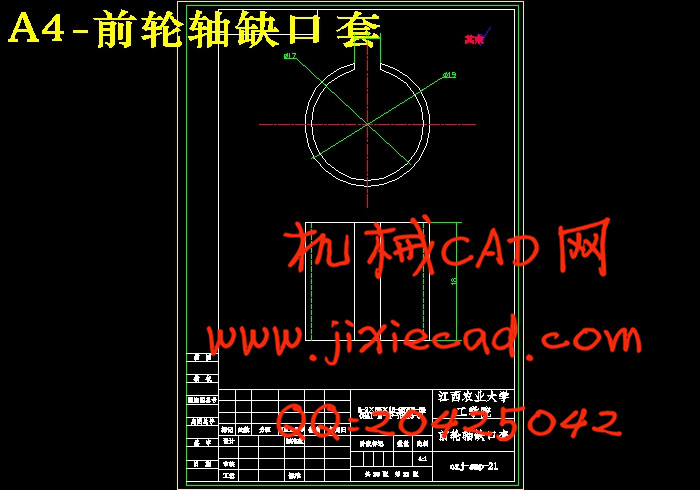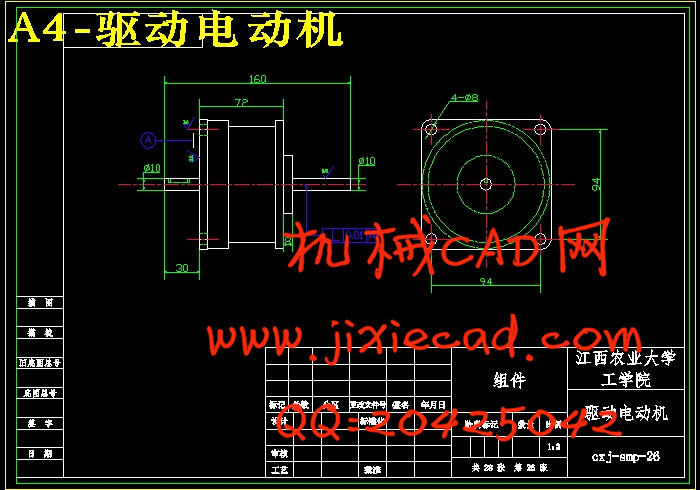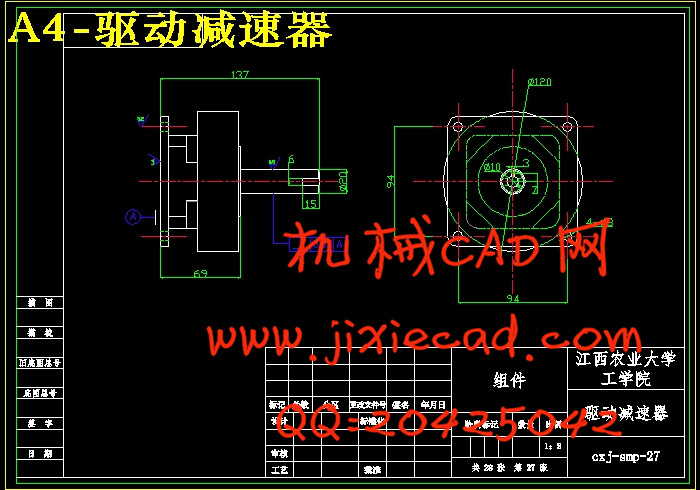设计简介
摘 要
农业智能移动平台(Agriculture and smart mobile platform)是运用计算机的计算和控制能力并利用传感器技术对环境的分析和反馈对四轮移动小车的驱动伺服系统和转向伺服系统的精确和智能控制以达到移动平台能携带各类机器智能运作的综合平台。该平台能按预定的路线,速度等要求运动,并具有一定的避障,爬坡,制动等功能。
农业智能移动平台由平台机架,前轮,前轮转向系统,后轮,后轮驱动系统,计算机计算和控制系统,传感器分析和反馈系统等构成。前轮转向系统和后轮驱动系统是农业智能移动平台机构部分的基础,本论文将对前轮转向系统和后轮驱动系统进行具体的机构设计和运动分析,设计工作如下:
1:介绍国内外各农业机器人的现状和趋势,各类农业机器人的工作原理,优势,不足和适应条件和适应范围,综合分析各农业机器人的设计提出自己的设计概念,做可行性分析和各准备工作。
2:对农业机器人的功能需求和设计概念确定农业智能移动平台的伺服转向系统和伺服驱动系统的机构设计方法。
3:综合移动平台工作要求选择伺服电动机和减速器。
4:对农业智能移动平台的骨架和整体布局的设计。
5:对农业智能移动平台整体机构的分析,找出不足之出,提出改进方案并完善。
关键词:农业,移动机器人,智能平台。
Agriculture and smart mobile platform design
Abstract: Intelligent Mobile Platform is the agricultural use of computers in the computing and control and make use of sensor technology on the environment analysis and feedback on the four-wheel-drive mobile robots servo system and steering precision servo systems and intelligent control to achieve the mobile platform can carry various types of Machine Intelligence the operation of an integrated platform .The platform according to a predetermined line, the speed of movement, etc., and has a barrier wall, climbing, braking and other functions.
Agriculture and smart mobile platform by platform rack, front, front-wheel steering systems, rear, rear-wheel drive system, computer and control systems, sensor analysis and feedback systems, etc..。Front-wheel steering system and rear-wheel drive system is the agricultural part of the smart mobile platform basis, the paper will be front-wheel steering system and rear-wheel drive system specific institutional design and motion analysis.
1: Introduction of the agricultural robot at home and abroad the status and trends of various agricultural robot working principle, advantages, shortcomings and to adapt to the conditions and adapt the scope of a comprehensive analysis of the design of agricultural robot design concept of their own, so the feasibility of analysis and the preparation work.
2: The function of the demand for agricultural robot design concept and to determine the agricultural intelligent mobile platform and the servo steering system, servo-driven design method.
3: an integrated mobile platform demanding servo motor and reducer selection.
4: Intelligent Mobile Platform for agriculture and the overall layout of the skeleton design.
5:Intelligent Mobile Platform for agriculture an analysis of the organization as a whole to identify the deficiencies, to improve and perfect the program.
Key words: Agriculture, mobile robots, intelligent platform.
目录
第一章 绪 论 -5-
1-1前言 - 5 -
1.2 课题研究的背景和意义 - 6 -
1.3国内外农业智能移动平台的发展现状 - 6 -
1.3.1移动机器人发展历史 - 6 -
1.3.2农业机器人的发展现状 - 7 -
第二章 机构整体选择 -8-
2.1驱动方式的选择 - 8 -
2.1.1燃料机构动力和电能机构动力的比较 - 8 -
2.1.1驱动方式的选择 - 8 -
2.2电能动力的设计 - 8 -
2.3移动机构的选择 - 8 -
2.3.1几种移动机构移动性能对比 - 8 -
2.3.2移动机构的选择 - 9 -
2.4轮子配置的选择 - 9 -
2.4.1移动轮个数的比较 - 9 -
2.4.2移动轮个数的选择 - 10 -
2.5四轮驱动和控制方式选择 - 10 -
2.5.1几种重要四轮结构的驱动和控制方式的比较 - 10 -
2.5.2几种重要的四轮驱动和其控制方式的分析 - 11 -
2.5.3四轮驱动和控制方式选择 - 12 -
2.5.4选择方案运动方式分析 - 12 -
2.6驱动伺服电机安装和传动方式的选择 - 12 -
2.6.1传统电机的安装方式 - 12 -
2.6.2新型电机的安装方式 - 13 -
2.6.3传统电机的安装方式与新型电机的安装方式的比较 - 13 -
2.7 转向伺服电机安装和传动方式的选择 - 14 -
第三章 机构整体设计 -14-
3.1前轮和转向的设计 - 14 -
3.1.1轮外胎的设计 - 14 -
3.1.2前轮轴和轴上零件的设计 - 14 -
3.1.3前轮转向系统机构设计 -16 -
3.2后轮和驱动的设计 - 16 -
3.2.1后轮驱动方法的设计 - 16 -
3.2.2定子传动连接方法 - 17 -
3.2.3电机输出轴和减速器输出轴轴上零件设计 - 17 -
3.3平台骨架的设计 - 18 -
3.4移动平台总体设计 - 19 -
第四章 电机和减速器 -19-
4.1各类电机的对比初步选择 - 19 -
4.2驱动电机的选择 - 20 -
4.2.1驱动电机的选择原则 - 20 -
4.2.2驱动电机和减速器的选择 - 21 -
4.3 转向电机的选择 - 22 -
第五章 移动平台的运动分析 -23-
5.1直线行走运动分析 - 23 -
5.2转向行走运动分析 - 23 -
参考文献 -25-
致谢 -26-
农业智能移动平台(Agriculture and smart mobile platform)是运用计算机的计算和控制能力并利用传感器技术对环境的分析和反馈对四轮移动小车的驱动伺服系统和转向伺服系统的精确和智能控制以达到移动平台能携带各类机器智能运作的综合平台。该平台能按预定的路线,速度等要求运动,并具有一定的避障,爬坡,制动等功能。
农业智能移动平台由平台机架,前轮,前轮转向系统,后轮,后轮驱动系统,计算机计算和控制系统,传感器分析和反馈系统等构成。前轮转向系统和后轮驱动系统是农业智能移动平台机构部分的基础,本论文将对前轮转向系统和后轮驱动系统进行具体的机构设计和运动分析,设计工作如下:
1:介绍国内外各农业机器人的现状和趋势,各类农业机器人的工作原理,优势,不足和适应条件和适应范围,综合分析各农业机器人的设计提出自己的设计概念,做可行性分析和各准备工作。
2:对农业机器人的功能需求和设计概念确定农业智能移动平台的伺服转向系统和伺服驱动系统的机构设计方法。
3:综合移动平台工作要求选择伺服电动机和减速器。
4:对农业智能移动平台的骨架和整体布局的设计。
5:对农业智能移动平台整体机构的分析,找出不足之出,提出改进方案并完善。
关键词:农业,移动机器人,智能平台。
Agriculture and smart mobile platform design
Abstract: Intelligent Mobile Platform is the agricultural use of computers in the computing and control and make use of sensor technology on the environment analysis and feedback on the four-wheel-drive mobile robots servo system and steering precision servo systems and intelligent control to achieve the mobile platform can carry various types of Machine Intelligence the operation of an integrated platform .The platform according to a predetermined line, the speed of movement, etc., and has a barrier wall, climbing, braking and other functions.
Agriculture and smart mobile platform by platform rack, front, front-wheel steering systems, rear, rear-wheel drive system, computer and control systems, sensor analysis and feedback systems, etc..。Front-wheel steering system and rear-wheel drive system is the agricultural part of the smart mobile platform basis, the paper will be front-wheel steering system and rear-wheel drive system specific institutional design and motion analysis.
1: Introduction of the agricultural robot at home and abroad the status and trends of various agricultural robot working principle, advantages, shortcomings and to adapt to the conditions and adapt the scope of a comprehensive analysis of the design of agricultural robot design concept of their own, so the feasibility of analysis and the preparation work.
2: The function of the demand for agricultural robot design concept and to determine the agricultural intelligent mobile platform and the servo steering system, servo-driven design method.
3: an integrated mobile platform demanding servo motor and reducer selection.
4: Intelligent Mobile Platform for agriculture and the overall layout of the skeleton design.
5:Intelligent Mobile Platform for agriculture an analysis of the organization as a whole to identify the deficiencies, to improve and perfect the program.
Key words: Agriculture, mobile robots, intelligent platform.
目录
第一章 绪 论 -5-
1-1前言 - 5 -
1.2 课题研究的背景和意义 - 6 -
1.3国内外农业智能移动平台的发展现状 - 6 -
1.3.1移动机器人发展历史 - 6 -
1.3.2农业机器人的发展现状 - 7 -
第二章 机构整体选择 -8-
2.1驱动方式的选择 - 8 -
2.1.1燃料机构动力和电能机构动力的比较 - 8 -
2.1.1驱动方式的选择 - 8 -
2.2电能动力的设计 - 8 -
2.3移动机构的选择 - 8 -
2.3.1几种移动机构移动性能对比 - 8 -
2.3.2移动机构的选择 - 9 -
2.4轮子配置的选择 - 9 -
2.4.1移动轮个数的比较 - 9 -
2.4.2移动轮个数的选择 - 10 -
2.5四轮驱动和控制方式选择 - 10 -
2.5.1几种重要四轮结构的驱动和控制方式的比较 - 10 -
2.5.2几种重要的四轮驱动和其控制方式的分析 - 11 -
2.5.3四轮驱动和控制方式选择 - 12 -
2.5.4选择方案运动方式分析 - 12 -
2.6驱动伺服电机安装和传动方式的选择 - 12 -
2.6.1传统电机的安装方式 - 12 -
2.6.2新型电机的安装方式 - 13 -
2.6.3传统电机的安装方式与新型电机的安装方式的比较 - 13 -
2.7 转向伺服电机安装和传动方式的选择 - 14 -
第三章 机构整体设计 -14-
3.1前轮和转向的设计 - 14 -
3.1.1轮外胎的设计 - 14 -
3.1.2前轮轴和轴上零件的设计 - 14 -
3.1.3前轮转向系统机构设计 -16 -
3.2后轮和驱动的设计 - 16 -
3.2.1后轮驱动方法的设计 - 16 -
3.2.2定子传动连接方法 - 17 -
3.2.3电机输出轴和减速器输出轴轴上零件设计 - 17 -
3.3平台骨架的设计 - 18 -
3.4移动平台总体设计 - 19 -
第四章 电机和减速器 -19-
4.1各类电机的对比初步选择 - 19 -
4.2驱动电机的选择 - 20 -
4.2.1驱动电机的选择原则 - 20 -
4.2.2驱动电机和减速器的选择 - 21 -
4.3 转向电机的选择 - 22 -
第五章 移动平台的运动分析 -23-
5.1直线行走运动分析 - 23 -
5.2转向行走运动分析 - 23 -
参考文献 -25-
致谢 -26-


